Friday, April 30, 2010
Audi R8 Other technical details
Audi TT Lawsuits
GM to launch Chevrolet in Korea

Daewoo may be General Motors’ only established brand in the Korean auto market, but it will soon add another: Chevrolet. GM revealed today at the Busan motor show that it will begin selling bowtie-badged vehicles in South Korea in 2011.
The Alpheon is being positioned in the Korea market as a luxury model at the top of the Daewoo range. It is fitted with a 3.0-liter V6 and a six-speed automatic transmission. GM Daewoo said the car will go on sale in the second half of the year.
GM Daewoo says the "Alpheon becomes a stand-alone luxury product brand in GM Daewoo's product portfolio." Much like its Korean couterpart, Hyundai, have made inroads into the luxury sedan segment with the Genesis model.








Press Release
GM Daewoo's All-New Luxury Sedan Debuts at 2010 Busan International Motor Show
Alpheon is GM Daewoo's entry into the upper-midsize segment
Busan, Korea - GM Daewoo Auto & Technology (GM Daewoo) unveiled its much-anticipated luxury sedan, the Alpheon, at the 2010 Busan International Motor Show today.
"With the introduction of the all-new Alpheon luxury sedan, we have added another attractive model to our product portfolio and our first entry in the fast-growing upper-midsize segment in Korea," said GM Daewoo President and CEO Mike Arcamone. "I am confident that the Alpheon will surpass the demands of the most sophisticated luxury sedan buyers in Korea."
Another highlight of the GM Daewoo stand is a seven-seat compact multi-purpose vehicle, the Orlando show car, which is making its first appearance at an international motor show in Asia.
In addition, GM Daewoo has on display the Lacetti Premiere and GentraX race cars, and a Matiz mini-car artistically wrapped in pink.
With "Advancing Style" as its theme for this year's Busan International Motor Show, GM Daewoo has 18 vehicles on display that showcase its automotive industry design expertise.
Alpheon - Stylish Luxury Sedan
The Alpheon is based on the same GM global architecture as the Buick LaCrosse, one of the three finalists for 2010 North American Car of the Year.
GM designers and engineers from Asia, Europe and North America targeted the luxury sedan as a global product that would meet the highest quality and performance standards in the most sophisticated markets.
At first glance, the Alpheon's sculpting design flows in all directions, giving the vehicle a tightly wrapped appearance and a fast, coupe-like profile. Its dynamic and elegant body styling is highlighted by sharp side lines, short overhangs and fenders wrapped precisely around large wheel housings, giving it the presence of an upscale large sedan (2,837-mm wheelbase and 4,995mm body length).
With a unique emblem on its front "waterfall" grille, the Alpheon becomes a stand-alone luxury product brand in GM Daewoo's product portfolio.
The innovative design philosophy continues in the Alpheon's interior. The flowing shape of its instrument panel design offers a distinct, confident and upscale impression. The refined look is an integrated center stack design that incorporates ice-blue light-emitting diode (LED) ambient lighting along with premium infotainment features. Adding to the use of soft-touch materials and low-gloss trim panels rather than traditional wood applications is indicative of exceptional and luxurious craftsmanship.
Powered by a 3.0-liter V-6 engine combined with a six-speed automatic transmission, the Alpheon will ensure responsive performance when it is launched in the second half of this year in Korea.
Hyundai Avantе
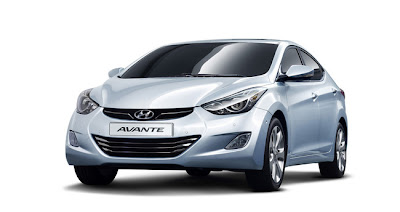
On a motor show in South Korea company Hyundai absolutely unexpectedly for all has presented new generation of model Avantе. The main difference of new version Avante from the predecessor is, certainly, design. The car shown in Korea is executed in new style of company Hyundai in which earlier have already been made Sonata and Verna.
Photos of interior of the new car for the current moment are not present. But it is possible not to doubt, as here Koreans can surprise. According to the representatives Hyundai, new Avante/Elantra will set new standards in the class. And already European firms should catch up with Koreans, rather the reverse.
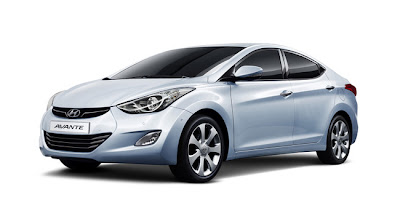
Under a cowl of car presented in Korea is 1,6-litre gasoline engine which gives out 140 h.p. But a bit later should appear and other power units. Sales new Avante will begin in Korea already in second half of this year. And the model will get to Europe only next year. Then it becomes clear, how many it will cost, but it is not necessary to count on discounts. Time of "cheap Koreans» has passed.
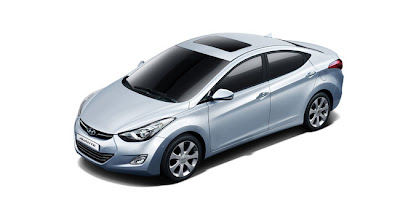
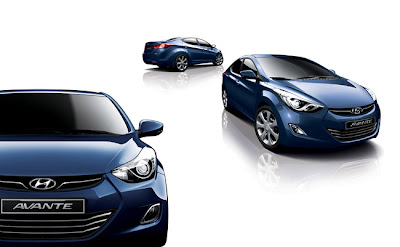
BMW X4
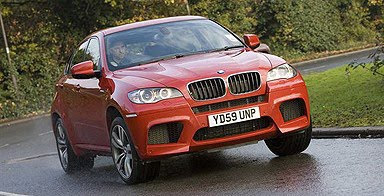
According to the British magazine AutoCar, company BMW prepares one more crossover. It will receive name BMW X4, and as it is possible to guess, the given model will be intermediate between Х3 and Х5. But, perhaps, another is more important. New BMW X4 is supposed to exhaust only in a three-door body, moreover and with a sloping roof. So it will be possible to name this model the first bonus off-road coupe.
According to representatives BMW the idea about creation Х4 has arisen at once after it became clear that big BMW X6 uses huge demand of buyers. And Bavarians are assured that cheaper X4 is capable to become the present hit of sales.
Thursday, April 29, 2010
chevrolet volt production car show
 chevrolet volt production show car
chevrolet volt production show car chevrolet volt production show car
chevrolet volt production show car chevrolet volt production show car
chevrolet volt production show car chevrolet volt production show car
chevrolet volt production show car 2011 chevrolet volt production show car
2011 chevrolet volt production show car
Wednesday, April 28, 2010
Chevrolet Equinox Second generation
Audi Releases “The Tony Stark Innovation Challenge”

In celebration of the April 26 world premiere of Iron Man 2 in Los Angeles, Audi of America, Inc. announced that it is launching a social media competition called “The Tony Stark Innovation Challenge” in support of its prominent presence in the film.
This is actually a social media competition which asks for the competitors to submit an up to two-minute video that displays their ideas for better living through the use of technology. The winner of the Audi Tony Stark Innovation Challenge will receive a 15,000 USD prize to fund the idea.
Tony Stark is forgoing weapons manufacturing and adopting a new business philosophy. As part of his latest venture, Tony has joined forces with the Stark Expo and Audi to challenge you to submit ideas for "Better Living through Technology."
Tony Stark will be seen throughout Iron Man 2 in his Audi R8 Spyder, the new soft top convertible version of the R8 super car which was featured in the first Iron Man. In addition to the R8 Spyder, the A8 sedan will also be showcased in the film.
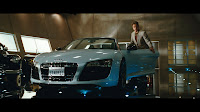
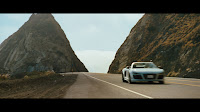

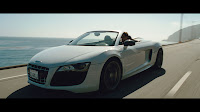

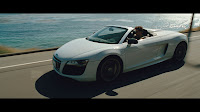
Press Release
- Contest calls for ideas for “living better through technology”
- Winner receives $15,000 to help fund their idea and a tech-lovers’
adventure
- Social media program to support the Audi Iron Man 2 integration
HERNDON, Va., Apr 27, 2010 - In celebration of the April 26 world
premiere of Paramount Pictures and Marvel Entertainment’s Iron Man 2 in Los
Angeles, Audi of America, Inc., announced that it is launching a social
media competition called “Stark Expo & Audi Present: The Tony Stark
Innovation Challenge” in support of its prominent presence in the film,
which releases on May 7. Beginning April 28, consumers can submit up to
two-minute videos that showcase their ideas for better living through the
use of technology, just as Tony Stark did with the Stark Expo. Participants
then must rally members of their Facebook, Twitter, MySpace and other social
media networks to rate, comment, and discuss their ideas. Full contest
information and rules are available at www.TonyStarkInnovationChallenge.com.
“Achieving progress through technology is the message behind Iron Man 2,
and this idea is fundamental to Audi,” said Scott Keogh, Chief Marketing
Officer, Audi of America. “The partnership in Iron Man 2 celebrates our
shared focus on innovation, and this contest allows anyone with a great idea
to not just express it, but potentially make a true difference within their
industry.”
“The Tony Stark Innovation Challenge” mirrors Tony Stark’s desire to take
Stark Industries in a new direction, using his vast intellect and resources
to eradicate problems through technology. Submissions will be judged by Audi
on their ability to:
• Make the world a better place by solving a problem or improving an
existing solution
• Articulate and demonstrate expertise of the “better living through
technology” philosophy
• Have a scalability and adaptability to potentially change the way we live
• Showcase innovation, adventures, and intelligence worthy of Audi and Tony
Stark
• Appeal to the general audience as viewer ratings will help determine top
entries
The winner will receive:
• $15,000 in funding to develop their concept
• Their experience documented and featured on www.audiusa.com
• A four-day trip for two to California including air transportation, hotel
and meals
• Transportation in the latest innovation from Audi, the 2011 A8
• Spa treatments, tailored cocktail attire, and grooming to perfect their
Stark style
• A tour of Audi Design Center in Santa Monica
• A VIP day with the ICON Aircraft team, joining them in flight and water
testing of the innovative ICON A5 aircraft (one of Tony Stark’s toys)
• A day at the Audi Sports Car Experience to drive Tony Stark’s favorite
car, the Audi R8 on a racetrack
Audi will also be lending its support to the film through activities
including a month-long late night TV and national cable campaign and an
online presence on Fandango.com and Movies.com. The brand is also unveilng
an all-new Audi Iron Man ad that will run in cinemas in the month leading up
to the film release. Additionally, Audi is sponsoring the re-launch of
Marvel.com that will include a digital comic book featuring the R8 Spyder.
Tony Stark will be seen throughout Iron Man 2 in his Audi R8 Spyder, the
new soft top convertible version of the R8 super car which was featured in
the first Iron Man. In addition to the R8 Spyder, the A8 sedan will also be
showcased in the film.
The video submission period starts April 28, 2010 and ends June 9, 2010.
The voting period starts April 28, 2010 and ends June 13, 2010. Approved
submissions will be posted to the site within 48 hours. Users can rate video
submissions once per day, for the length of the contest participation period
on a scale from one to five. Final ratings will be calculated toward the
final score of each entry and will help determine the grand prize winner.
Finalists will be selected shortly after the submissions end. Clearance,
notifications and interviews will take place between June 17, 2010 and June
25, 1010, and the winner will be announced the week of June 28, 2010. Prizes
will be redeemed in August 2010. Submissions are only accepted in English
and from residents of the 50 U.S. and D.C. who are 18 and over and who
possess a valid driver’s license.
Lotus Engineering demonstrates the lightweight future of the passenger car

Lotus Engineering conducted two studies to look at the possibility of developing passenger vehicles from 2017. The specialised lightweight sports car maker says its long-time philosophy of weight reduction will benefit potential customers in the areas of fuel consumption and C02 emissions.
company engineers discovered that by improving the aerodynamics by 80 counts, the car netted a six mile per gallon improvement in its highway fuel economy rating (note: a "count" is a thousandth of a point of a Cd number, so reducing a Cd of 0.150 by 50 counts would give you a Cd of 0.100). On the flipside, taking out 400 pounds of stuff only improved the car's highway mpg by one mile a gallon, though that's largely because of the Newtonian "an object in motion tends to stay in motion unless acted upon by an outside force" hubbub.
The interior systems include 50% lighter seats, climate control hardware, navigation electronics and others. There is a high level of component integration for space maximisation and weight minimisation. An example is the audio/ air conditioning/navigation touch screen which also contains the shifter and parking brake functions. Chassis and suspension components are to be downsized, the glazing and width of the windscreen possibly reduced and replaced with an appropriate, lower weight substitute.




Press Release
- Study by Lotus Engineering concludes that a vehicle mass improvement
of 38% versus a conventional mainstream vehicle can be achieved at only
3% cost.
- Efficient design and lightweight materials significantly reduce CO2
emissions.
Lotus Engineering has conducted a study to develop a commercially viable
mass reduction strategy for mainstream passenger vehicles. This study,
released by the International Council on Clean Transportation, focused on
the use of lightweight materials and efficient design and demonstrated
substantial mass savings. When compared with a benchmark Toyota Venza
crossover utility vehicle, a 38% reduction in vehicle mass, excluding
powertrain, can be achieved for only a 3% increase in component costs using
engineering techniques and technologies viable for mainstream production
programmes by 2020. The 2020 vehicle architecture utilises a mix of stronger
and lighter weight materials, a high degree of component integration and
advanced joining and assembly methodologies.
Based on U.S. Department of Energy estimates, a total vehicle mass
reduction of 33% including powertrain, as demonstrated on the 2020 passenger
car model, results in a 23% reduction in fuel consumption. This study
highlights how automotive manufacturers can adopt the Lotus philosophy of
performance through light weight.
Dr Robert Hentschel, Director of Lotus Engineering said: "Lighter
vehicles are cleaner and more efficient. That philosophy has always been
core to Lotus' approach to vehicle engineering and is now more relevant than
ever. Lightweight Architectures and Efficient Performance are just two of
our core competencies and we are delighted to have completed this study with
input from the National Highway Traffic Safety Administration and the U.S.
Environmental Protection Agency to provide direction for future CO2
reductions. We believe that this approach will be commonplace in the
industry for the future design of vehicles."
The study investigated scenarios for two distinct vehicle architectures
appropriate for production in 2017 and 2020. The near-term scenario is based
on applying industry leading mass reducing technologies, improved materials
and component integration and would be assembled using existing facilities.
The mass reduction for this nearer term vehicle, excluding powertrain, is
21% with an estimated cost saving of 2%.
A benchmark Toyota Venza was disassembled, analysed and weighed to
develop a bill of materials and understand component masses. In developing
the two low mass concepts, Lotus Engineering employed a total vehicle mass
reduction strategy utilising efficient design, component integration,
materials selection, manufacturing and assembly. All key interior and
exterior dimensions and volumes were retained for both models and the
vehicles were packaged to accommodate key safety and structural dimensional
and quality targets. The new vehicles retain the vision, sight line, comfort
and occupant package of the benchmarked Toyota Venza.
Darren Somerset, Chief Executive Officer of Lotus Engineering
Incorporated, Lotus' North American engineering division which led the
study, said "A highly efficient total vehicle system level architecture was
achieved by developing well integrated sub-systems and components,
innovative use of materials and process and the application of advanced
analytical techniques. Lotus Engineering is at the forefront of the
automotive industry's drive for the reduction in CO2 and other greenhouse
gas emissions and this study showcases Lotus Engineering's expertise and
outlines a clear roadmap to cost effective mass efficient vehicle
technologies."
Mass and Cost Summary
Base excluding powertrain |
| ||||
|
(kg) | 2020 | 2017 | ||
% | % | % | % | ||
Body | 383 | 42% | 135% | 15% | 98% |
Closures/Fenders | 143 | 41% | 76% | 25% | 102% |
Bumpers | 18.0 | 11% | 103% | 11% | 103% |
Thermal | 9.25 | 0% | 100% | 0% | 100% |
Electrical | 23.6 | 36% | 96% | 29% | 95% |
Interior | 252 | 39% | 96% | 27% | 97% |
Lighting | 9.90 | 0% | 100% | 0% | 100% |
Suspension/Chassis | 379 | 43% | 95% | 26% | 100% |
Glazing | 43.7 | 0% | 100% | 0% | 100% |
Misc. | 30.1 | 24% | 99% | 24% | 99% |
Totals | 1290 | 38% | 103% | 21% | 98% |
The full report, entitled ‘An Assessment of Mass Reduction Opportunities for
a 2017 - 2020 Model Year Vehicle Program' can be found at the following
link:
http://www.theicct.org/documents/0000/1430/Mass_reduction_final_2010.pdf
ENDS
The 2020 Passenger Car Technical Detail
Body
The body includes the floor and underbody, dash panel assembly, front
structure, body sides and roof assembly. The baseline Toyota Venza
body-in-white contained over 400 parts and the revised 2020 model reduced
that part count to 211. The body-in-white materials used in the baseline
Venza were 100% steel, while the 2020 model used 37% aluminium, 30%
magnesium, 21% composites and 7% high strength steel. This reduces the
structure mass by 42% from 382 kg to 221 kg.
The low mass 2020 body-in-white would be constructed using a low energy
joining process proven on high speed trains; this process is already used on
some low volume automotive applications. This low energy, low heat friction
stir welding process would be used in combination with adhesive bonding, a
technique already proven on Lotus production sports cars. In this instance,
the robotically controlled welding and adhesive bonding process would be
combined with programmable robotic fixturing, a versatile process which can
be used to construct small and large vehicles using the same equipment.
Closures/Fenders
The closures include all hinged exterior elements, for example, the front
and rear doors and the rear liftgate. One alternative approach included
fixing the primary boot section to improve the structure, reduce masses and
limit exposure to high voltage systems. A lightweight access door was
provided for checking and replacing fluids.
The closures on the baseline Toyota Venza were made up of 100% steel. The
low mass Venza closures/fenders would be made up of 33% magnesium, 21%
plastic, 18% steel, 6% aluminium with the other 22% consisting of multiple
materials. The mass savings are 41%, a reduction from 143 kg to 84 kg.
Interior
The interior systems consist of the instrument panel, seats, soft and
hard trim, carpeting, climate control hardware, audio, navigation and
communication electronics, vehicle control elements and restraint systems.
There is a high level of component integration and electronic interfaces
replace mechanical controls on the low mass model. For the 2020 model the
instrument panel is eliminated replaced by driver and passenger side modules
containing all key functional and safety hardware. A low mass trim panel
made from a high quality aerated plastic closes out the two modules. The air
conditioning module is incorporated into the console eliminating the need
for close out trim panels; heated and cooled cupholders are integrated into
the HVA/C module. The audio/HVA/C/Navigation touch screen contains the
shifter and parking brake functions and interfaces with small electric
solenoids. This eliminates conventional steel parking brake and shifter
controls and cables as well as freeing up interior space.
The front seats mount to the structural sill and tunnel structure
eliminating conventional seat mounting brackets (10 kg) and the need to
locally reinforce the floorpan. The composite front seat structure utilises
proven foam technology; the seat mass is reduced by up to 50%. The rear seat
support structure is moulded into the composite floorpan eliminating the
need for a separate steel support structure. The front and rear seats use a
knit to shape fabric that eliminates material scrap and offers customers the
opportunity to order their favourite patterns for their new vehicle. Four
removable carpet modules replace the traditional full floor carpeting; this
reduces mass and allows cost effective upgrading of the carpet quality. The
floorpan is grained in all visible areas. The 2017 production interior mass
was reduced from 250 kg to 182 kg with projected cost savings of 3%. The
2020 production interior mass was 153 kg with projected cost savings of 4%.
Chassis/Suspension
The chassis and suspension system was composed of suspension support
cradles, control links, springs, shock absorbers, bushings, stabilizer bars
and links, steering knuckles, brakes, steering gearbox, bearings, hydraulic
systems, wheels, tires, jack and steering column.
The chassis and suspension components were downsized based on the revised
vehicle curb weight, maintaining the baseline carrying capacity and
incorporating the mass of the hybrid drive system.
The total vehicle curb weight reduction for the 2020 vehicle was 38%,
excluding the powertrain. Based on the gross vehicle weight, which includes
retaining the baseline cargo capacity of 549 kg and utilising a hybrid
powertrain, the chassis and the suspension components were reduced in mass
by 43%, with projected cost savings of 5%.
Front and Rear Bumpers
The materials used on the front and rear bumpers were very similar to the
existing model to maintain the current level of performance. One change was
to replace the front steel beam with an aluminium beam which reduced mass by
11%. The use of a magnesium beam was analysed but at the current time
exceeded the allowable price factor.
Heating, Ventilation and Air Conditioning
The air conditioning system was integrated into a passenger compartment
system and an engine compartment system. This section addressed the under
hood components which included the compressor, condenser and related
plumbing. The under hood components were investigated for technologies and
mass.
The study showed a relatively small mass difference for the underhood air
conditioning components based on both vehicle mass and interior volume.
Because of the highly evolved nature of these components, the requirements
for equivalent air conditioning performance and the lack of a clear
consensus for a future automotive refrigerant, the mass and cost of the
Toyota Venza compressor, condenser and associated plumbing were left
unchanged for both the 2017 and 2020 models.
Glazing
The glazing of the baseline vehicle was classified into two groups: fixed
and moving. The fixed glass is bonded into position using industry standard
adhesives and was classified into two sub groups: wiped and non wiped.
Factors involved in making decisions about glazing materials include the
level of abrasion it is likely to see during the vehicle life, the
legislative requirements for light transmissibility, the legislative
requirements for passenger retention and the contribution it will make to
interior noise abatement.
The specific gravity of glass is 2.6 and the thickness of a windshield is
usually between 4.5 mm and 5 mm, therefore the mass per square metre of 5 mm
glass is approximately 13 kgs. The high mass of glass provides a strong
incentive to reduce the glazed area of the body, reduce the thickness of the
glass and find a suitable substitute that is lighter. Fixed glass on the
side of the vehicle offers the best opportunity for mass reduction.
The mass of the baseline glazing was retained for both the 2017 and 2020
models; this was a conservative approach. It is possible that coated
polycarbonate materials may become mainstream in the 2017 - 2020 timeframe
for fixed applications.
Electrical/Lighting
The estimated mass savings for using thinwall cladding and copper clad
aluminium wiring, as used on the 2017 model was 36% versus the baseline
model. The lighting technologies section reviewed included diodes, xenon and
halogen. The study also reviewed a variety of wireless technologies under
development for non-transportation applications that could be used in this
time period pending successful development for mobile applications.
Tuesday, April 27, 2010
2010 Lexus RX 350 Safety
Lexus LFA Engine
Ford Fiesta S1600 Special Edition

Ford has announced a limited series sport variant of the Fiesta model - the Fiesta S1600 - for the U.K. market.
The Ford Fiesta S1600 is based on the Fiesta Zetec-S and comes with a range of extra equipment. The power of the Ford Fiesta S1600 comes from the 1.6-litre Duratec Ti-VCT petrol engine that develops 120PS which can be fitted with a Mountune engine upgrade package.
The Fiesta S1600 is based on the Zetec-S trim level and adds a range of sport equipment such as heated leather sports seats, motorsport-branded floor mats and scuff plates, and alloy pedals.
The exterior sports a body-styling kit including a new front bumper, large rear spoiler and diffuser, 17” white alloy wheels and a choice of white or blue body colour with motorsport stripes.
On the interior, the Fiesta will get heated, stitched leather sports seats with standard side-airbags, leather steering wheel, handbrake cover, and gearknob, plus Motorsport-branded floor mats and scuff plates.
The Fiesta S1600 will be limited to only 650 units and is now avaiable for order at Ford dealers in the U.K..
Prices start at £16,665 (€19,152).
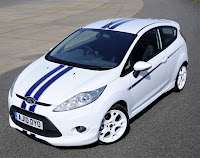
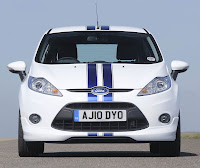
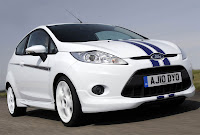
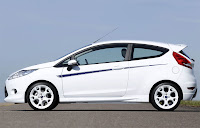
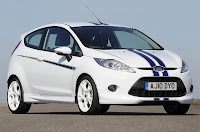
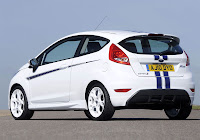
Press Release
NEW FORD STAR WITH STRIPES - FASTER FIESTA CONTINUES PROUD HERITAGE
BRENTWOOD, Essex, 26 April, 2010 - The thoroughbred lineage of fast Fords has a new addition to the family, in the eye-catching new Fiesta S1600.
Based on the popular Fiesta Zetec-S - with a generous standard specification that includes alloy pedals and Quickclear windscreen - the sporty Fiesta S1600 interior adds heated, stitched leather sports seats with standard side-airbags, leather steering wheel, handbrake cover and gearknob, plus Motorsport-branded floor mats and scuff plates.
On the outside, the sporting pedigree is made clear, through a comprehensive
body-styling kit that includes a unique front bumper with flared lower valence panel, extended side skirts, large rear spoiler and rear diffuser, finished with 17-in, white alloy wheels (16-in on diesel models). The newcomer's special paint finish is available in Frozen White or Performance Blue, with contrasting motorsport stripes.
Performance comes from a choice of Fiesta's responsive 1.6-litre, 120PS Duratec
Ti-VCT petrol engine, or improved 1.6-litre Duratorq TDCi engine, now with 95PS. For performance enthusiasts, a further engine upgrade package will be offered via Ford's established performance tuning partner, Mountune.
Fiesta S1600 continues a 30-year sporting Fiesta bloodline that began with the Mk1 XR2 in 1981 and has included Supersport, XR2(i), Si, RS and ST models.
Gill Palmer, Ford of Britain's Fiesta Product Manager, said: "Since its introduction, Fiesta and sporting pedigree have never been far apart and the latest incarnation of that is S1600, bringing extra motorsport feel to the award-winning Fiesta style and driving quality."
Fast Ford fans are encouraged to act quickly, with only 650 of these special faster Fiestas being created. They are available now from Ford dealers, priced from £16,665 on-the-road.
Delahaye Bella Figura Bugnotti Coupe
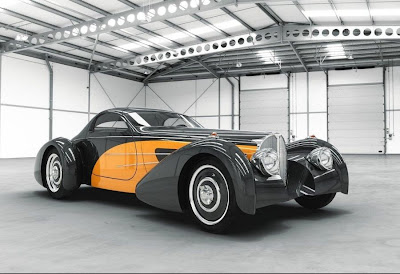
In the thirties twentieth century the motor industry of France endured present gold epoch. Now the French motor-car manufacturers shy try to squeeze into a premium-segment, but eighty years ago France was famous for the luxury marks which competed on equal terms with Mercedes, Horch, Rolls-Royce, Bentley and Alfa Romeo. Firm Delahaye which was exhausting magnificent cars with strongly pronounced sports character was one of such luxury French motor-car manufacturers. Unfortunately, in the fifties destiny Delahaye has been predetermined - the draconian post-war tax laws have actually put on a side of extinction manufacturers powerful and expensive cars. To possess the magnificent car in France became so unprofitable that many fans of cars «with character» have preferred to refuse too burdensome four-wheel toys. Delahay has got under firm Hotchkiss control, it was switched to release of auto trucks, and in 1955 has at all sunk into a non-existence.
But after the lapse of almost sixty years Delahaye has revived behind ocean. It appears, in New Jersey there firm Delahaye USA which has decided to return legendary mark to a life. Instead of creating present Delahaye, they have rethought Jean Bugatti's creative heritage, taking for a basis cult model of the thirtieth years Bugatti Type 57 Atlantique. And the car created on motives Bugatti named Delahaye Bella Figura Bugnotti Coupe which will present on court of public in August on the well-known autoshow Concorso d'Elegance that will pass in Pebble Beach California.
Information on that car while very small. It is expected that under a cowl motor V12 will take places, and the car will be offered with two bodies – aluminium and carbon. In the first case the car will cost $450 000, and in the second $250 000. If someone will be confused with such price all for $50 000 can be bought whale-set Delahaye Bella Figura Bugnotti Coupe and to assemble the car by own hands. However, the engine and a check point should be bought separately. By itself, Delahaye will be issued by scanty circulation that, however, only will add to it values in the opinion of collectors.
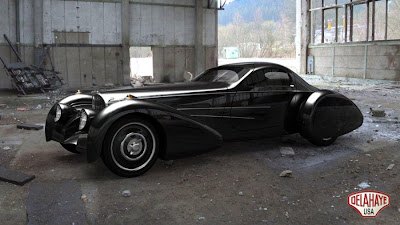
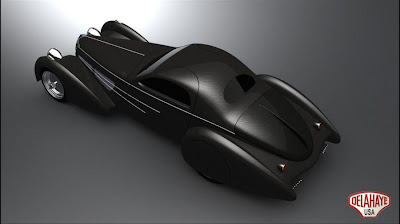
VW invites users to help create the Infotainment systems of the future

Open Innovation Contest, "App My Ride", begins on 3rd May
Wolfsburg, 26 April 2010 - Volkswagen is inviting designers, programmers, developers and interested users to help develop applications for the Infotainment systems of the future as part of the Open Innovation Contest, "App My Ride". With this contest, Volkswagen has become the first car manufacturer to use the idea of open innovation for the further development of its products.
In the so-called "App My Ride" competition, users can jointly develop new Infotainment applications with Volkswagen. A jury of experts will select the winner whose creativity will be rewarded with special prizes. "Our aim is to invite the international developer community to take part in designing a future system," says Prof. Dr Jürgen Leohold, Head of the Volkswagen Group Research. So-called apps, also known as application programmes for certain devices which are available through an online shop, have helped to contribute to the smartphone boom. Applications designed by users (User Generated Content) are of central importance to the boom and are made available online by other users. Companies like Apple and Google successfully aid this nearly inexhaustible source of innovation.
"A quiet revolution is taking place right now," explains Dr Johann Füller, CEO of the innovation agency partner to Volkswagen through the "App My Ride" competition, Hyve AG. "The customer-orientated culture of the internet places an enormous power in the hands of the users. Leading organisations are starting to harness this power to develop better solutions and increase their competitiveness." Exactly what the "App My Ride" contest is targeting.
Currently a prototype for Volkswagen's Infotainment system is being developed in which Flash applications designed by different creators can be accumulated. In order to research the potential of apps for the vehicle Infotainment system, Volkswagen is trying to produce the most varied collection of applications possible.
An "innovation community" open to all internet users will be created as of 3rd May 2010 for the competition under the following URL: app-my-ride.volkswagen.com. Here, participants in the competition can log in and either load programmed apps or send in their creative ideas for future ones. "The participants are supposed to imagine what the purpose of their ideal Infotainment system is and how it would work and now they have the opportunity to make it a reality. At the same time, you can analyse the existing apps on our platform and discuss their design, uses and purposes," explains Dr Peter Oel, Head of "Control Designs and Drivers" of Volkswagen Group Research.
To develop an app, the participants must have the following:
- An idea for an app to be installed in a vehicle
- Graphic design of the user interface
- Programming in Adobe Flash / Flex
The purpose, design and logical construction of the app should be geared towards the possible requirements of drivers and other occupants.
The participant's creativity will be rewarded at the end of the competition. The most innovative application will be chosen by the "App My Ride" community and a jury consisting of Volkswagen managers and external experts. Besides cash and non-cash prizes worth up to €14,000, a special prize for students will also be awarded. This involves a placement within Volkswagen Group Research in Tokyo, Shanghai, California or Wolfsburg. Moreover, the winner of the competition can also expect an exclusive trip to take part in an international vehicle presentation which covers the costs of the flight and hotel.
Monday, April 26, 2010
BMW M6 details
Aston Martin Rapide Specifications
Aston Martin Cygnet details
Audi R8 Spyder e-Tron
2010 Mini Cooper clubman
2010 Mazda MX-5 MIATA Facelift
2010 Naomi for Haiti Lotus Evora Sports Cars













